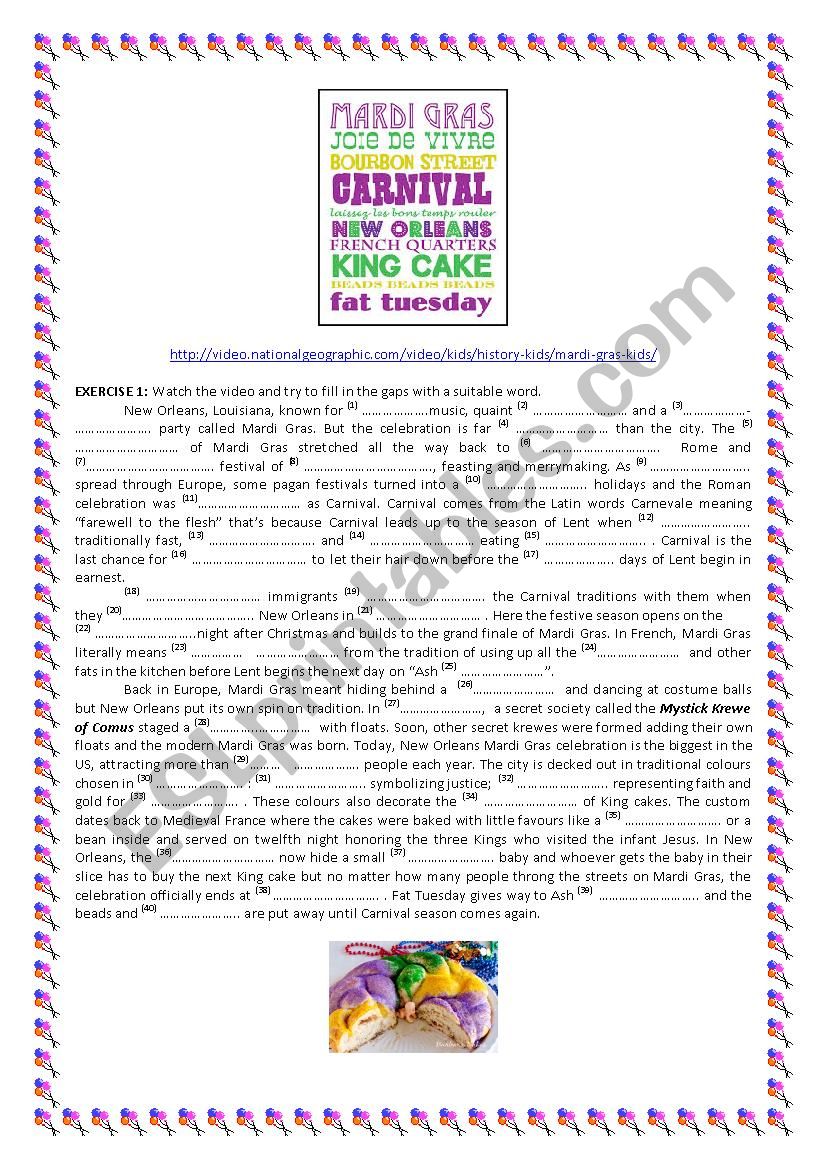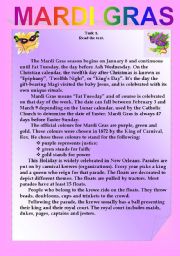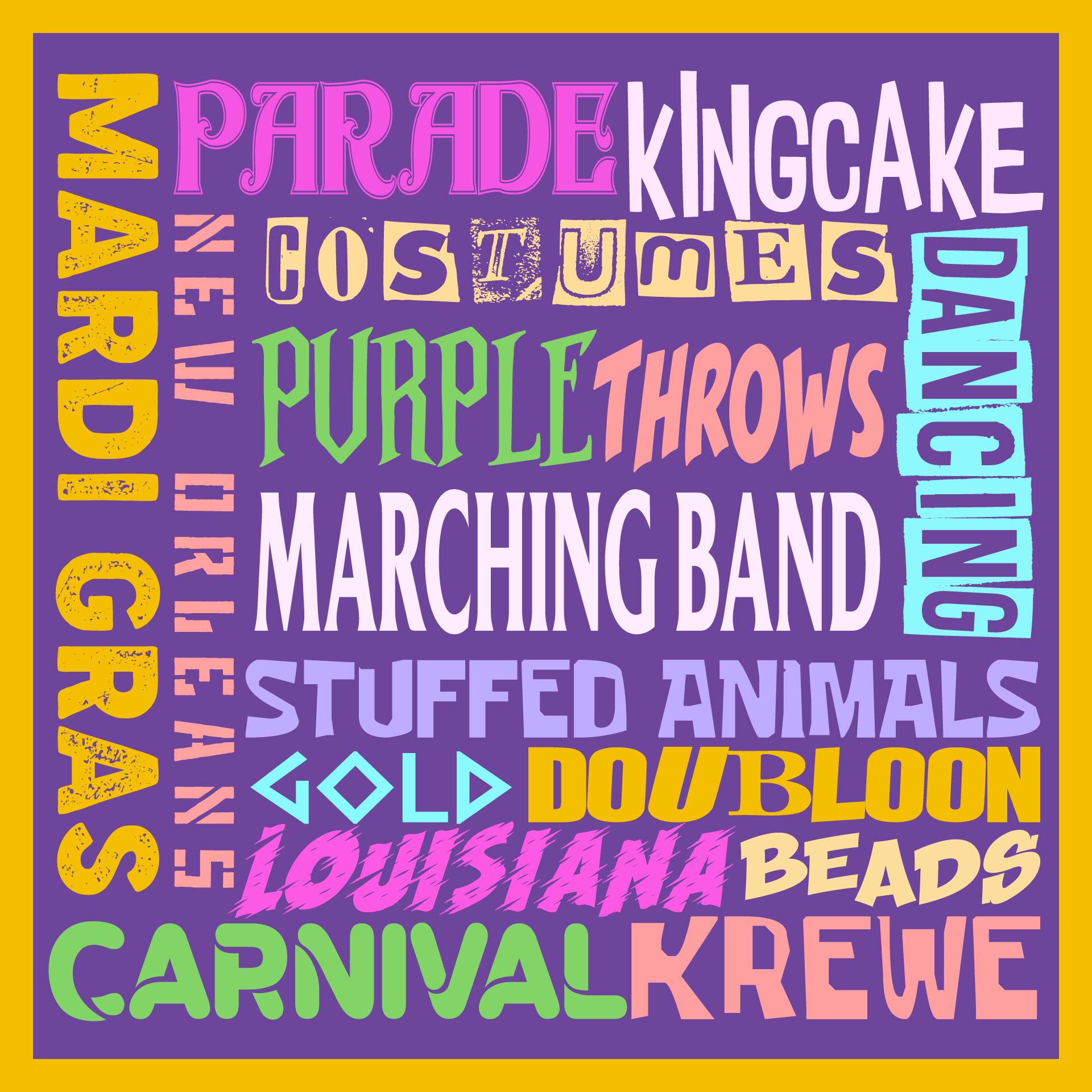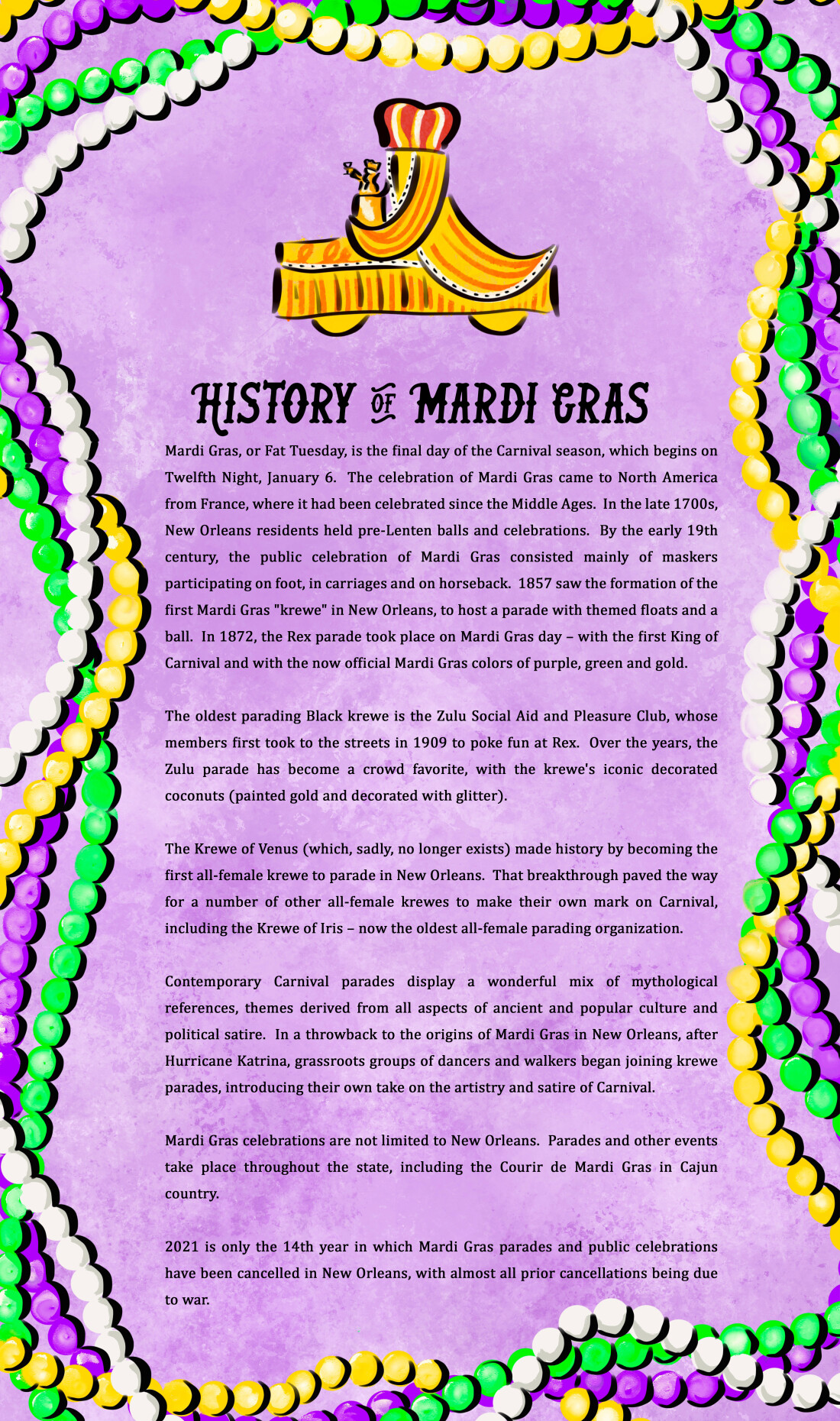Mardi Gras is a cultural celebration that holds a significant place in the hearts of many people across the world. It is a time of joy, revelry, and vibrant costumes. This colorful festival has a rich history and has become synonymous with New Orleans, Louisiana. Let’s explore the captivating history and customs of Mardi Gras.
- The Origins of Mardi Gras
Mardi Gras dates back thousands of years to ancient pagan celebrations. The festival became connected to Christianity when it was adapted by the Catholic Church as a prelude to Lent. The name “Mardi Gras” itself translates to “Fat Tuesday” in French, which refers to the practice of indulging in rich and fatty foods before the fasting period of Lent begins.
 Image: Mardi Gras lesson plan
Image: Mardi Gras lesson plan
- The Tradition of Parades and Floats
One of the most iconic aspects of Mardi Gras is the elaborate parades and floats that take over the streets. These lively processions are organized by various social groups known as “krewes.” Each krewe has its own unique theme and designs mesmerizing floats adorned with intricate decorations and towering sculptures. Float riders throw beads, doubloons, and other trinkets to the crowd, creating an atmosphere of excitement and camaraderie.
 Image: Back to school & classroom activities for all!
Image: Back to school & classroom activities for all!
- The Vibrant Costumes and Masks
Mardi Gras is renowned for its flamboyant costumes and masks. Participants dress up in lavish outfits adorned with feathers, sequins, and vibrant colors. Masks hold special significance during Mardi Gras, as they originally allowed people to hide their identities and class differences, fostering a sense of equality and freedom during the festivities.
 Image: History of Mardi Gras
Image: History of Mardi Gras
- The King Cake Tradition
No discussion about Mardi Gras is complete without mentioning the King Cake, a delicious pastry that has become synonymous with the festival. The cake is typically decorated with colorful icing and sugar in the traditional Mardi Gras colors of purple, green, and gold. Hidden inside the cake is a small plastic baby, and the person who discovers it is believed to have good luck and is responsible for hosting the next year’s Mardi Gras celebration.
 Image: History of Mardi Gras
Image: History of Mardi Gras
- The Music and Dance
Mardi Gras is also renowned for its lively music and dance traditions. Jazz music, which originated in New Orleans, forms the soulful soundtrack to the celebrations. Brass bands and marching bands fill the air with spirited tunes, while people dance to the rhythm of life. The traditional Mardi Gras dance is known as the “Second Line,” where umbrella-wielding revelers parade through the streets, spreading joy and merriment.
 Image: Mardi Gras
Image: Mardi Gras
- Mardi Gras Around the World
While New Orleans is famously associated with Mardi Gras, the festival is celebrated in various forms across the globe. The renowned carnival in Rio de Janeiro, Brazil, is one such example. Other countries that embrace the spirit of Mardi Gras include Italy (where it is known as “Carnevale”), Germany (with its “Karneval” celebrations), and many Caribbean nations.
 Image: Mardi Gras crossword puzzle printable
Image: Mardi Gras crossword puzzle printable
- The Essence of Mardi Gras
At its core, Mardi Gras is a celebration of life, community, and the freedom to express oneself. It is a time to let go of inhibitions, embrace joy, and revel in the shared connections of humanity. Mardi Gras encapsulates the spirit of unity, where people from all walks of life come together to celebrate a common heritage and create lasting memories.
 Image: A History of Mardi Gras
Image: A History of Mardi Gras
Mardi Gras continues to captivate the imagination and bring people together in a riot of colors and festivities. It is a vibrant celebration that showcases the diversity and cultural richness of our world. So, whether you are lucky enough to experience Mardi Gras in person or simply appreciate it from afar, may the spirit of Mardi Gras inspire joy, unity, and a zest for life.
 Image: History of Mardi Gras printable
Image: History of Mardi Gras printable